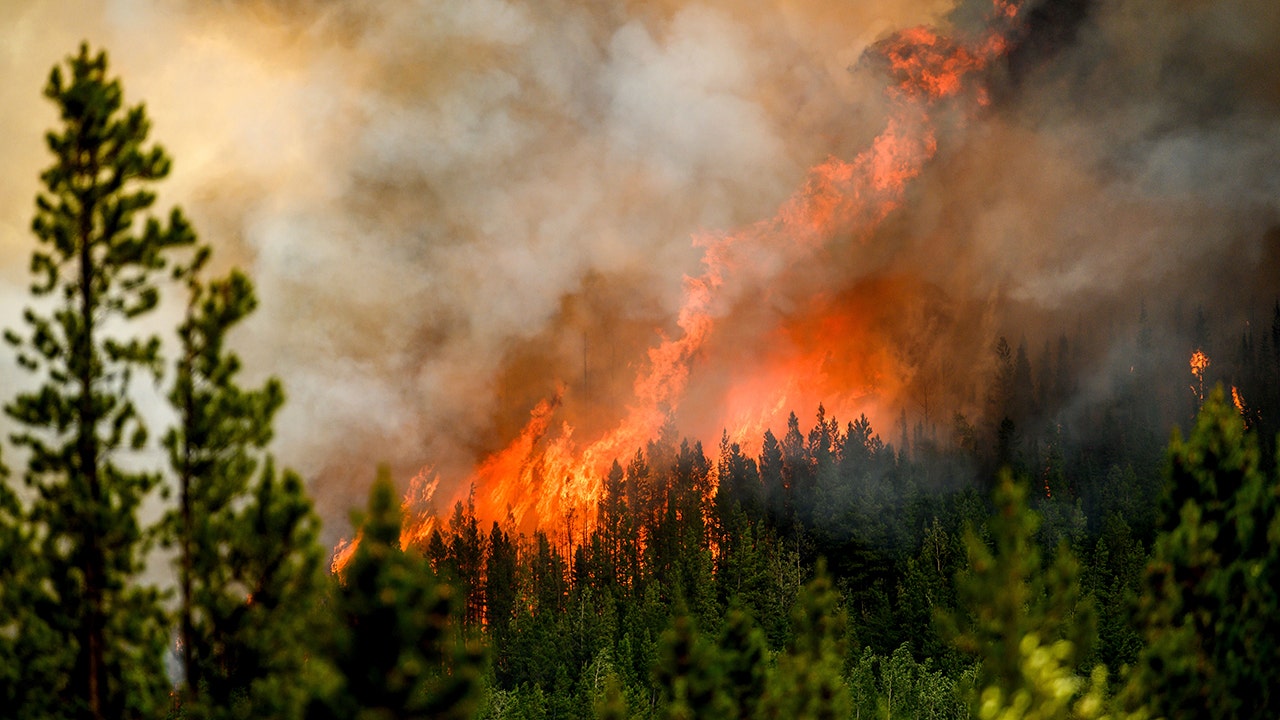When James Bergen embarks on a thrilling adventure, jumping out of a plane into the midst of raging wildfires in Canada, fear is the last thing on his mind. Instead, he revels in the rush of uncertainty, never knowing what challenges he will face as a smokejumper on the frontlines of these devastating fires. Whether it’s extinguishing a single burning tree in a meadow one day, or battling a massive fire threatening a community the next, the anticipation of the unknown fuels his excitement.
British Columbia, the only province in Canada that relies on smokejumpers, has seen over 900 fires this season, with the smoke even reaching the United States and Europe at times. The province’s large size, dense population, and thriving timber industry make it a prime candidate for maintaining a smokejumper program. While other provinces may opt for helicopters or aircraft to transport firefighters and equipment, British Columbia recognizes the value of speed and efficiency that smokejumpers bring to the table.
According to Bergen, it takes significant resources and expertise to sustain a smokejumper program, making it a complex operation to establish quickly. In his experience, this year’s wildfire season is the busiest he has witnessed since 2016.
Smokejumpers are deployed in remote areas or when there is a need for rapid resource mobilization. They bail out of planes at altitudes ranging from 1,500 to 3,000 feet, making them one of the fastest and most efficient firefighting methods available. Unlike helicopters, which land to unload firefighters, smokejumpers parachute directly into the heart of the blaze. Fixed-wing aircraft also outperform helicopters in terms of speed and capacity.
At Bergen’s base in Fort St. John, the modified DC-3 plane used can carry up to 13 smokejumpers and two spotters. These brave firefighters carry specialized gear worth around $12,000 each to protect themselves from falling tree limbs, rappel down in case they get stuck, and stay buoyant in water bodies. The gear includes ballistic Kevlar suits and helmets with mesh face shields. Many smokejumpers even wear additional protective armor, such as hockey pads or motocross gear. All this equipment, along with fire suppression tools, is air-dropped separately from the plane.
Smokejumpers assess the situation upon arrival at a fire and devise a plan to tackle it. Then, it’s time to take the leap. Whether they dispatch three or four jumpers or the entire crew of 13, each smokejumper must be an experienced wildland firefighter with at least two years, typically six to seven years, of experience. However, it takes more than just experience to become a smokejumper. It requires a specific passion for wildland firefighting and a desire to excel in both smoke jumping and fire suppression.
British Columbia currently has 67 smokejumpers, and there are approximately 120 jumpers working in the region, including American firefighters dispatched by the U.S. Forest Service and the Bureau of Land Management.
Dan Frittenburg, a seasoned smokejumper at Fort St. John, began fighting fires in 2005 and joined the smokejumpers in 2008. This summer, he achieved a milestone by completing his 100th jump, setting a Canadian record. Frittenburg attributes his thrill-seeking nature, love for the outdoors, and the camaraderie of his fellow smokejumpers as reasons for his dedication to the job. He also sees it as a personal challenge that keeps him young, even though the nerves and adrenaline remain present with every jump.
In conclusion, smokejumping is an extraordinary and demanding job that requires a unique combination of skills, passion, and resilience. With their quick response and fearless determination, smokejumpers play a vital role in combating wildfires and protecting communities in Canada’s most fire-prone areas.
Denial of responsibility! VigourTimes is an automatic aggregator of Global media. In each content, the hyperlink to the primary source is specified. All trademarks belong to their rightful owners, and all materials to their authors. For any complaint, please reach us at – [email protected]. We will take necessary action within 24 hours.


